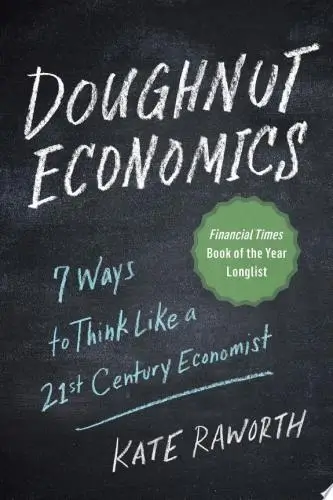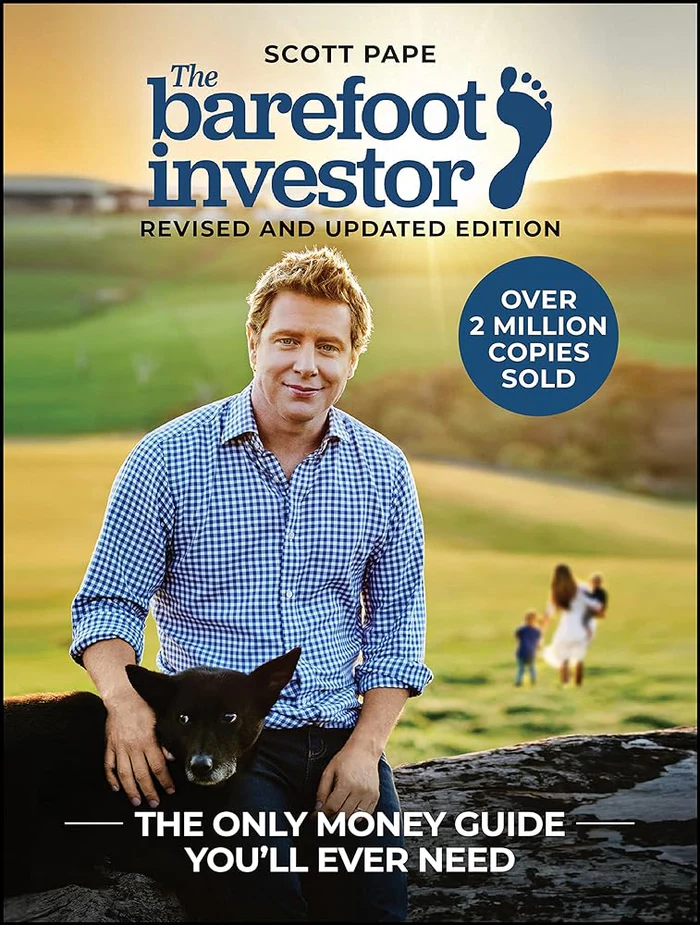Rich Dad's Cashflow Quadrant
Rich Dad's Guide to Financial Freedom
What's it about?
Rich Dad's Cashflow Quadrant by Robert T. Kiyosaki dives into the four types of income earners: Employees (E), Self-employed (S), Business Owners (B), and Investors (I). It teaches you how to transition from relying on a paycheck (E or S) to generating wealth through investments and business ownership (B and I). This book is a guide for those seeking financial independence, providing insights on leveraging your mindset and actions to move towards more passive income streams. It's ideal for anyone looking to understand and apply the principles of financial freedom.
About the Author
Robert T. Kiyosaki is an influential American author and businessman best known for his book "Rich Dad Poor Dad." His work emphasizes financial education, investment, and the importance of creating passive income. Kiyosaki's writing combines personal anecdotes with practical advice, advocating for financial literacy and independence.
10 Key Ideas of Rich Dad's Cashflow Quadrant
Understanding the Four Quadrants: E, S, B, and I
The Cashflow Quadrant represents four types of people who make up the world of business: Employees (E), Self-employed (S), Business owners (B), and Investors (I).
Understanding these quadrants is crucial for recognizing where you currently stand in terms of earning income and where you might want to go.
Employees trade time for money.
Self-employed individuals own a job.
Business owners create systems that generate income.
Investors invest money to earn more money.
This concept encourages individuals to move from the left side (E and S) to the right side (B and I) of the quadrant to achieve financial freedom.
Learn DeeperIdentify your current quadrant: Start by honestly assessing which quadrant you currently occupy. Are you an Employee (E), Self-employed (S), Business owner (B), or Investor (I)? Understanding your starting point is crucial for planning your journey toward financial freedom.
Educate yourself: Regardless of your current quadrant, invest time in learning about the other quadrants. For example, if you're an Employee, learn what it takes to transition into the Self-employed quadrant, and so on. Books, online courses, and workshops can be great resources.
Develop a side project: If you're in the E or S quadrant, consider starting a side project that aligns more closely with the B or I quadrants. This could be anything from an online business that can run without your constant attention (moving towards B) to investing in stocks or real estate (moving towards I).
Network with those in the B and I quadrants: Surrounding yourself with people who are where you want to be can provide invaluable insights and opportunities. Attend industry meetups, join relevant online communities, and don't be afraid to reach out to people for advice.
Create a financial plan: Map out a plan that includes specific goals, timelines, and actions that will help you move from your current quadrant to where you want to be. Regularly review and adjust your plan as needed.
- Example
If you're an Employee (E), you might start a dropshipping business in your spare time, aiming to automate most of its operations. This side project could eventually allow you to transition into the Business owner (B) quadrant.
- Example
As a Self-employed (S) individual, such as a freelance graphic designer, you could begin investing a portion of your earnings into dividend-paying stocks or mutual funds, gradually building an investment portfolio and moving towards the Investor (I) quadrant.
The Importance of Financial Education
Financial education is key to moving across the quadrants.
It involves understanding financial statements, investment strategies, market trends, and the tax benefits of different types of income.
Without this knowledge, transitioning from being an employee or self-employed to becoming a successful business owner or investor is challenging.
Financial education empowers individuals to make informed decisions about investments, understand risks, and ultimately, increase their wealth.
Learn DeeperStart with the basics: Begin your financial education journey by understanding basic financial statements. This includes knowing how to read and interpret balance sheets, income statements, and cash flow statements. Use online resources or take a basic accounting course to get started.
Learn about investment strategies: Dive into different types of investments such as stocks, bonds, real estate, and mutual funds. Understand the risks and rewards associated with each type. Consider joining investment clubs or online forums to learn from experienced investors.
Keep up with market trends: Regularly follow financial news and market trends. This will help you make informed decisions and identify potential investment opportunities. Use apps or subscribe to financial newsletters to stay updated.
Understand tax benefits: Educate yourself on the tax advantages of various investment vehicles. This could significantly impact your investment choices and overall financial strategy. Consult with a tax professional or take a tax planning course to enhance your knowledge.
- Example
If you're interested in real estate investing, start by learning how to analyze a property's cash flow. This involves calculating the income the property generates minus its operating expenses and mortgage payments to see if it's a good investment.
- Example
For those looking into the stock market, begin by understanding how to read a stock's financial statements and its price-to-earnings (P/E) ratio. This can help you determine if a stock is undervalued or overvalued compared to its earnings.
Creating Systems and Leveraging Technology
Successful business owners and investors create systems that operate independently of their time.
This means building businesses that do not require their presence to generate income or investing in assets that provide passive income.
Leveraging technology can automate operations, manage finances, and market products or services efficiently.
By creating such systems, individuals can earn more while working less, allowing them to focus on expanding their portfolio or enjoying their time.
Learn DeeperIdentify tasks that can be automated in your business or investments. This could include using software for accounting, customer relationship management (CRM), or even marketing automation tools to streamline operations.
Invest in learning about and implementing technology that can help you manage your investments or business more efficiently. This might mean taking online courses on digital marketing, understanding the basics of blockchain for investments, or learning how to use project management tools.
Delegate or outsource non-core activities to focus on expanding your business or investment portfolio. This could involve hiring a virtual assistant to handle administrative tasks or using a property management company to take care of your real estate investments.
Regularly review and optimize your systems and processes to ensure they remain efficient and effective. Stay updated with new technologies and methodologies that could further automate your operations or enhance your investment strategies.
Create a passive income stream by investing in assets such as dividend-paying stocks, real estate, or creating digital products that require minimal ongoing effort after the initial setup.
- Example
A small business owner implements a cloud-based accounting software to automate their financial tracking and reporting, freeing up time to focus on strategic planning and growth.
- Example
An investor uses a combination of robo-advisors for managing a diversified investment portfolio and real estate crowdfunding platforms to invest in property, both of which provide passive income with minimal day-to-day involvement.
The Power of Passive Income
Passive income is earnings derived from a rental property, limited partnership, or other enterprises in which a person is not actively involved.
Unlike active income, which stops coming in once you stop working, passive income provides continuous cash flow regardless of your day-to-day activities.
Building sources of passive income is essential for achieving financial independence, as it allows you to cover your living expenses without relying on a traditional 9-to-5 job.
Learn DeeperIdentify your interests or skills that could be turned into a passive income stream. This could be anything from writing a book, creating an online course, investing in dividend-paying stocks, or purchasing a rental property.
Educate yourself about the different types of passive income investments and what it takes to succeed in each. Read books, attend workshops, or take online courses to understand the nuances of real estate investing, stock market investing, or starting an online business.
Start small and scale up. Begin with a manageable project or investment to learn the ropes. For example, if you're interested in real estate, consider starting with a single rental property before expanding your portfolio.
Automate as much as possible. Use technology to your advantage by automating tasks such as bill payments, rent collection, or dividend reinvestment plans. This will help minimize your active involvement and make the income truly passive.
Network with others who are successfully generating passive income. Joining real estate investment groups, online forums, or social media communities can provide valuable insights, advice, and potential partnership opportunities.
- Example
A graphic designer creates a series of digital templates for resumes, presentations, and social media posts, selling them on platforms like Etsy or Creative Market. After the initial design work, these products continue to generate income with minimal effort.
- Example
An individual purchases a duplex, lives in one unit, and rents out the other. The rent from the tenant covers the mortgage and expenses, potentially providing additional cash flow. Over time, the owner may buy more properties, increasing their passive income.
The Role of Taxes and How They Affect Your Wealth
Taxes are one of the largest expenses for individuals in the E and S quadrants.
However, those in the B and I quadrants often benefit from tax laws designed to promote business and investment.
Understanding how to legally minimize tax liabilities through investments, business expenses, and tax-deferred accounts can significantly increase your net worth.
This requires a solid grasp of tax laws and often consultation with a tax professional.
Learn DeeperConsult a Tax Professional: Even if you're just starting out, investing in a consultation with a tax advisor can pay off. They can help you understand your current tax situation and plan for future investments or business ventures to minimize liabilities.
Educate Yourself on Tax Laws: Spend time learning about the tax advantages available for businesses and investors. Websites, books, and courses can offer valuable insights into how you can legally reduce your tax bill.
Start a Side Business: If you're primarily in the E (Employee) quadrant, consider starting a small business on the side. This can open up deductions for business expenses, potentially lowering your taxable income.
Invest in Tax-Advantaged Accounts: Look into retirement accounts like IRAs or 401(k)s, which offer tax benefits either now or in the future. Investing in these can reduce your taxable income and grow your wealth over time.
- Example
If you buy a piece of equipment for your side business, you might be able to write off the expense, reducing your overall taxable income. For instance, purchasing a new computer for freelance graphic design work.
- Example
By contributing to a 401(k), you reduce your taxable income by the amount you contribute. For example, if you earn $50,000 a year and contribute $5,000 to your 401(k), you'll only be taxed on $45,000.
Deeper knowledge. Personal growth. Unlocked.
Unlock this book's key ideas and 15M+ more. Learn with quick, impactful summaries.
Read Full SummarySign up and read for free!
Rich Dad's Cashflow Quadrant Summary: Common Questions
"Success is not about working hard, but working smart." This quote from Rich Dad's Cashflow Quadrant by Robert T. Kiyosaki perfectly encapsulates the essence of the book. Kiyosaki delves into the four quadrants of income generation: Employee, Self-Employed, Business Owner, and Investor, emphasizing the importance of transitioning from the left side of the quadrant (Employee and Self-Employed) to the right side (Business Owner and Investor) to achieve financial independence.
The book effectively breaks down the mindset and financial strategies required to move from being an Employee or Self-Employed individual to becoming a successful Business Owner or Investor. Kiyosaki's insights on creating multiple streams of income and understanding the difference between active and passive income are eye-opening and informative. However, some concepts might be oversimplified, leaving room for further exploration for those seeking in-depth financial knowledge.
Overall, Rich Dad's Cashflow Quadrant is a thought-provoking read that challenges conventional beliefs about money and encourages readers to rethink their approach to wealth creation. If you're interested in personal finance and seeking to expand your financial literacy, this book is a great starting point.
Experience Personalized Book Summaries, Today!
Discover a new way to gain knowledge, and save time.
Sign up for our 7-day trial now.
No Credit Card Needed

Similar Books

The Art of Spending Money
Morgan Housel
Trading in the Zone
Mark Douglas
Doughnut Economics
Kate Raworth
A study guide for Barbara Ehrenreich's "Nickel and Dimed: On (Not) Getting By in America"
Gale, Cengage Learning
Bitcoin For Dummies
Prypto
Debt
David Graeber
The Barefoot Investor
Scott Pape
Money Has No Value
Samuel A. Chambers
Financial Peace
Dave Ramsey
Capital in the Twenty-First Century
Thomas PikettyTrending Summaries

Peak
Anders Ericsson
Never Split the Difference
Chris Voss
Smart Brevity
Jim VandeHei
The Psychology of Money
Morgan Housel
The First 90 Days
Michael D. Watkins
Atomic Habits
James Clear
Thinking, Fast and Slow
Daniel Kahneman
The Body Keeps the Score
Bessel van der Kolk M.D.
The Power of Regret
Daniel H. Pink
The Compound Effect
Darren HardyNew Books

The ^AOxford Handbook of Job Loss and Job Search
Ute-Christine Klehe PhD
Job Interviews For Dummies®
Joyce Lain Kennedy
Job Interviews In A Week
Alison Straw
Handbook of Career Development
Gideon Arulmani
The Art of Spending Money
Morgan Housel
$100M Offers
Alex Hormozi
A Candle for Kiri
Edna Mae Holm
Principles of Marketing, Global Edition
Gary Armstrong
Serpent Rising: The Kundalini Compendium
Neven Paar

